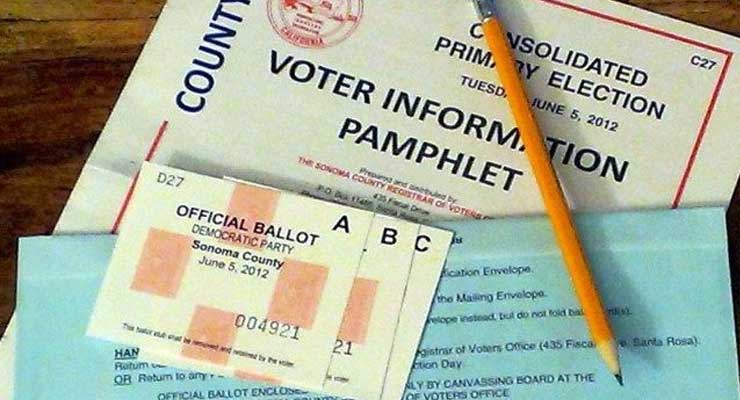
Top-two systems for elections will not include third parties again despite sustained public outcry
From Ballot Access News:
The top-two systems used in California and Washington have again barred all minor party candidates from the November ballot, except the minor party candidates who ran in races with only one major party candidate on the ballot. “Major party candidate” in this context means a Democrat or a Republican.
Use this link to the California election returns for the June 8, 2016 primary. Use this link to the Washington election returns for the August 2, 2016 primary.
In California in 2016 (excluding the presidential primary), there were fourteen minor party candidates on a primary ballot for partisan office: nine Libertarians, two Greens, two Peace & Freedom members, and one member of the American Independent Party. None of those were in races with only one or two candidates on the primary ballot, and none of them qualified for the November ballot.
However, there were five California Libertarians running for the legislature who will advance to the November ballot, because in all five races only one name was printed in the primary ballot. The five Libertarians will be on the November ballot, with their party label, in the 33rd State Senate district, and for the Assembly in the 1st, 2nd, 51st, and 62nd districts. None of the five Libertarians’ names were on the primary ballot; in all five instances they were write-in candidates in the primary.
In Washington in 2016, there were thirty-three minor party candidates on a primary ballot for federal or state office: 29 Libertarians, one Green, one Socialist Workers, one Fifth Republic Party, and one Citizens Party. Of these thirty-three candidates, eleven ran in races with only two names on the primary ballot, so of course all eleven of them qualified for the November ballot. All eleven of these are Libertarians. The Washington Libertarian Party did an excellent job of predicting which races would only have one other name on the primary ballot, and then recruiting a candidate for such races. One of those races is the Attorney General’s race, where the only other candidate who filed is a Democrat.
Washington does not draw a clear line between independent candidates and minor party candidates, because there is no party registration, and any candidate can have any short label on the ballot that is not obscene. It would be possible for an argument to be made that my tally of 33 minor party candidates is too low. To differentiate between minor party candidates and independent candidates with a political label, I talked to some of the candidates, or looked at their web pages, or their statements in the Voters Guide, to try to differentiate actual minor parties from independents with a label. But even if my classification is wrong, the conclusion is the same; none of the candidates with an ambiguous label qualified for the November ballot.
Leave a Reply